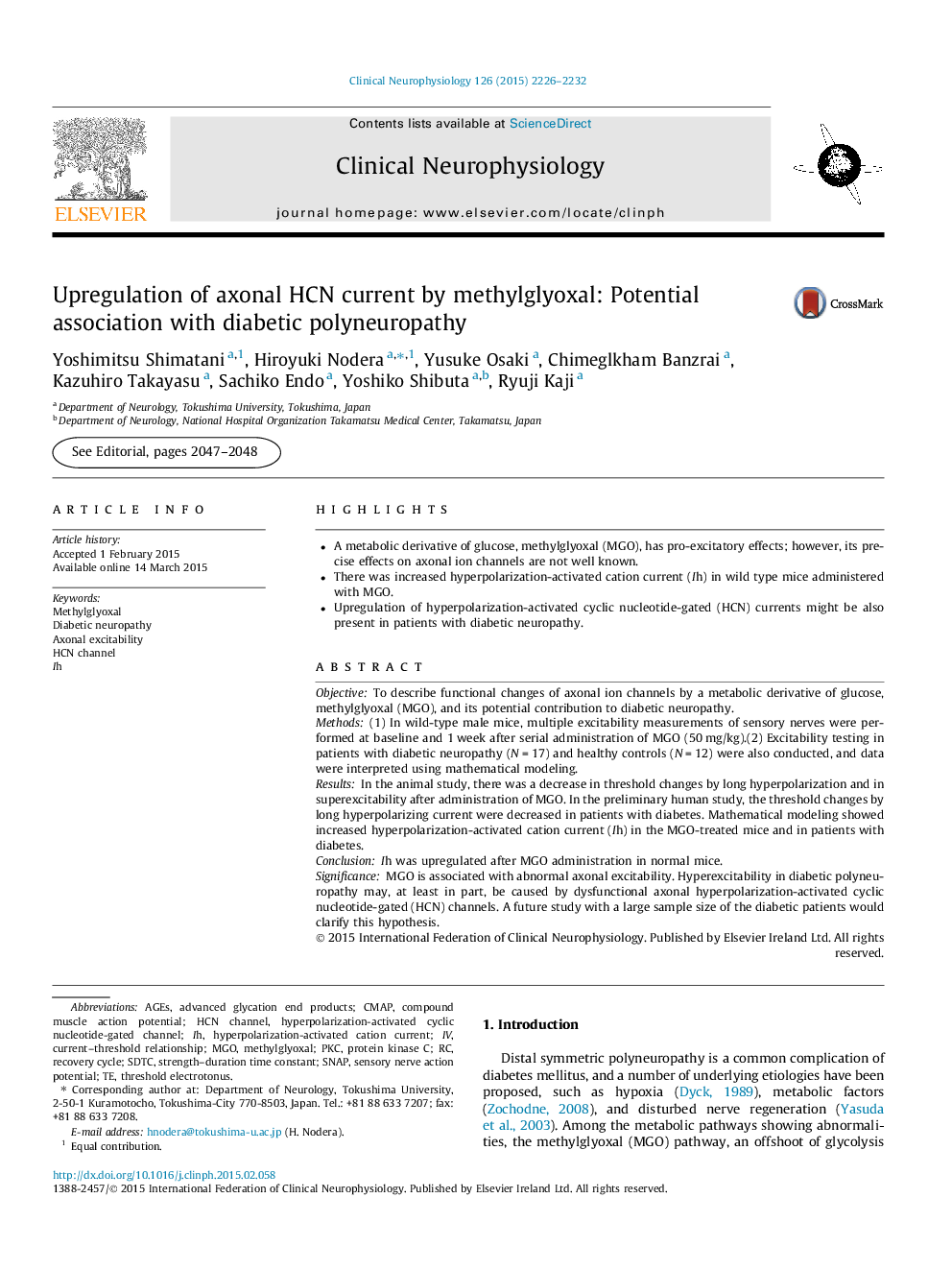| Article ID | Journal | Published Year | Pages | File Type |
|---|---|---|---|---|
| 6007799 | Clinical Neurophysiology | 2015 | 7 Pages |
â¢A metabolic derivative of glucose, methylglyoxal (MGO), has pro-excitatory effects; however, its precise effects on axonal ion channels are not well known.â¢There was increased hyperpolarization-activated cation current (Ih) in wild type mice administered with MGO.â¢Upregulation of hyperpolarization-activated cyclic nucleotide-gated (HCN) currents might be also present in patients with diabetic neuropathy.
ObjectiveTo describe functional changes of axonal ion channels by a metabolic derivative of glucose, methylglyoxal (MGO), and its potential contribution to diabetic neuropathy.Methods(1) In wild-type male mice, multiple excitability measurements of sensory nerves were performed at baseline and 1Â week after serial administration of MGO (50Â mg/kg).(2) Excitability testing in patients with diabetic neuropathy (NÂ =Â 17) and healthy controls (NÂ =Â 12) were also conducted, and data were interpreted using mathematical modeling.ResultsIn the animal study, there was a decrease in threshold changes by long hyperpolarization and in superexcitability after administration of MGO. In the preliminary human study, the threshold changes by long hyperpolarizing current were decreased in patients with diabetes. Mathematical modeling showed increased hyperpolarization-activated cation current (Ih) in the MGO-treated mice and in patients with diabetes.ConclusionIh was upregulated after MGO administration in normal mice.SignificanceMGO is associated with abnormal axonal excitability. Hyperexcitability in diabetic polyneuropathy may, at least in part, be caused by dysfunctional axonal hyperpolarization-activated cyclic nucleotide-gated (HCN) channels. A future study with a large sample size of the diabetic patients would clarify this hypothesis.
